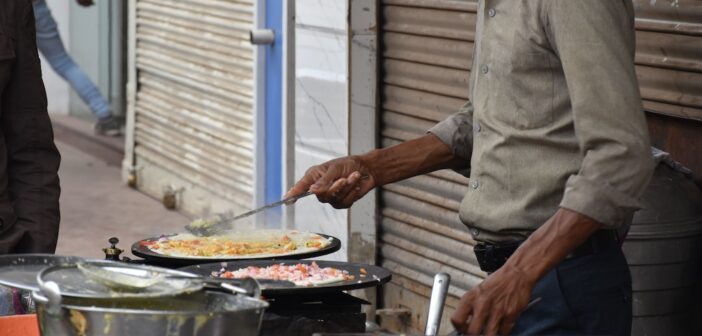TL;DR
Over the last three decades, average monthly meals at home declined overall, while paid meals eaten outside increased, especially among urban middle-income households. In contrast, rural middle-income groups showed no such increase, indicating varying urban-rural outcomes. While the poorest have improved meal access at home, there is significant divergence in discretionary spending like dining out.
Context
Expenditure on food is one of the crucial indicators of nutritional intake in India. The Ministry of Statistics and Programme Implementation (MoSPI)’s recently published report titled “Nutrition intake in India”, based on the ‘Household Consumption and Expenditure (HCE)’ surveys on food and its items in 2022-23 (survey period: August, 2022 to July, 2023) and 2023-24 (survey period: August, 2023 to July, 2024) shed light on long-term changes in peoples consumption patterns by income groups and geographies.
Who releases the data?
The MoSPI published this data in “Nutrition Intake in India” report, based on the Household Consumption and Expenditure (HCE) surveys for 2022–23 and 2023–24.
Where can I download Clean & Structured Data?
Access comprehensive data on Nutritional intake in India on Dataful
Key Insights
Comparison of the data from the past HCE surveys dating back to 1993-94 reveals that:
- Average number of meals consumed at home and away from home per month per household has increased across most expenditure classes (fractile) categories.
- Number of meals consumed at home per month among poorest rural and urban households (fractile class 1) has increased, except for a slight decrease among poorest urban households in 2023-24.
- Consumption of meals at home has decreased among middle-class (fractile class 6) rural and urban households.
- While meal consumption on payment away from home has increased substantially for middle-class (fractile class 6) urban households, it remained almost the same with no noticeable increase or decrease among rural households.
Why does it matter?
The rising expenditure on food away from home by urban households, alongside a decline in such spending by rural households, highlights growing urban-rural disparities. This might mean that while urban consumers enjoy increased disposable incomes and lifestyle-driven choices, rural households are either constrained by stagnant earnings or prioritising essentials over discretionary spending. This divergence signals unequal outcomes in India’s economic growth. Bridging this gap is vital for inclusive development, as rural prosperity is crucial to national demand, social equity, and sustainable progress.
Key Numbers (from 1993–94 to 2023–24)
- Average number of meals consumed per month per Household at home across all classes:
Rural: 350 → 329.84
Urban: 301→ 265.9
- Average number of meals consumed per month per Household away from home on payment across all classes:
Rural: 1 → 1.8
Urban: 4 → 6.84
- Average number of meals consumed at home per month per poorest class (fractile class 1) household:
Rural: 310 → 410.88
Urban: 379 → 367.6
- Average number of meals consumed away from home on payment per month per middle-income class (fractile class 6) household:
Rural: Less than 1
Urban: 1 to 3.18



